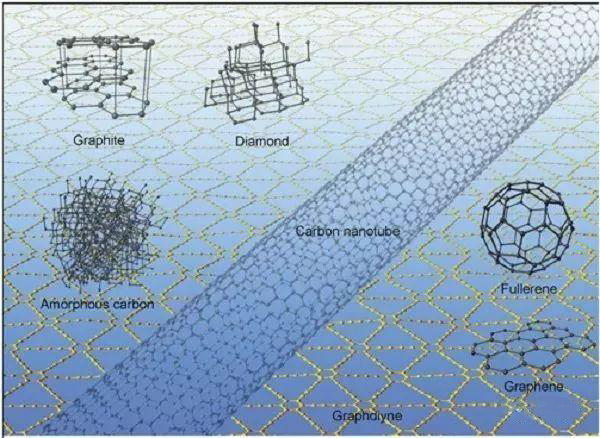Solid carbon materials which converted from CO2
Writing in Nano Letters, October 2016, StuartLicht, a chemist at George Washington University in Washington, DC, and his colleagues have developed a solar reactor technology that converts carbon dioxide from the air into solid carbon nanofibers. Researchers have found that when they add tiny amounts of metals such as nickel, copper, cobalt or iron to a battery, the metals form tiny islands at the cathode, which then act as landing points for thousands of carbon atoms, separating them and inserting them into their places, rapidly growing into long, thin fibers.
The Licht team previously described the solid carbon material they made from carbon dioxide as amorphous carbon, which costs about $1,000 per ton. Nanofibres are even more valuable, at $25, 000 a tonne, because they are widely used in lightweight, high-strength composites such as car bumper and aircraft parts. "We are developing a high value-added product and hope to use this technology to make power materials." Licht said.
CO2 can be made into solid carbon materials
Others are pursuing the same strategy. A small New Jersey company called Liquid Light is developing commercial technology to turn carbon dioxide into ethylene glycol, a chemical that is a $27 billion a year market. Another company, Skyonic, recently set up a demonstration plant in Texas to convert carbon dioxide into baking soda, hydrochloric acid and bleach.
These commodities cannot be used on the same scale as gasoline and other transportation fuels, so using them to pull carbon dioxide from the air out of chimneys would not have a significant impact on global atmospheric carbon dioxide levels, points out Matthew Kanan, a chemist at Stanford University in Palo Alto. The World Health Organization is working to convert carbon dioxide into plastics and other high-value goods. "We can also use it as a springboard. With time and experience, companies can find new ways to improve production processes, reduce costs, and start making high-volume, low-cost fuels and other compounds. I'm looking forward to it." Kanan said.





 Facebook
Facebook YouTube
YouTube LinkedIn
LinkedIn Twitter
Twitter